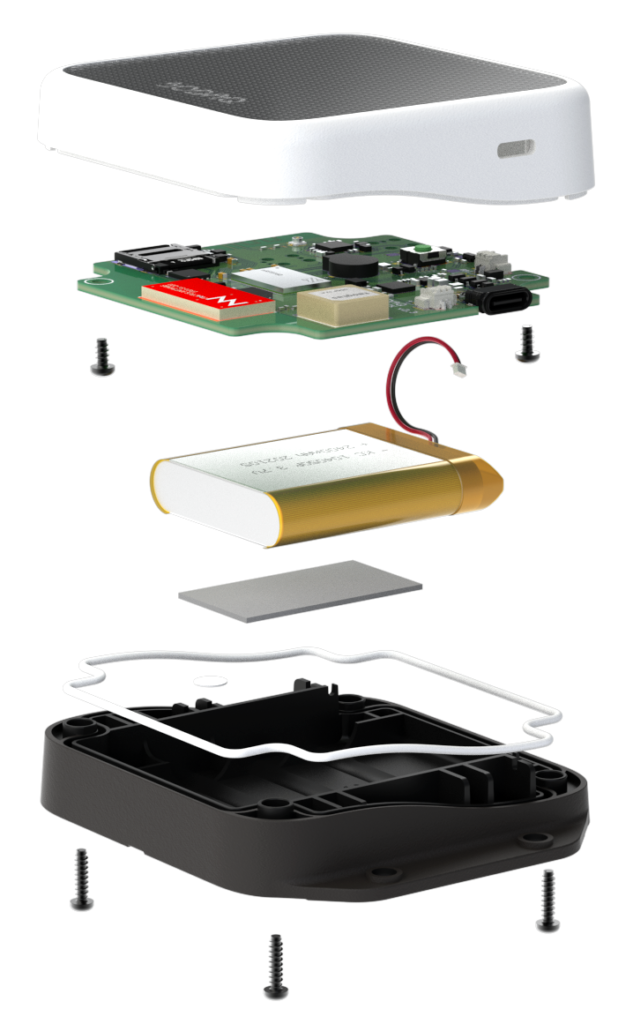Antenna as a Sensor: the use of RF energy harvesting to improve device Lifetime
Nowadays we live in a world full of devices that all need to be connected to a network to do what they were created for. However, connecting to a network can be extremely power intensive and that is where SODAQ with the support of our partner, Ignion, has come up with a solution.
Devices that use relatively small power sources, such as SODAQ’s tracking devices, will drain at a much faster rate if they keep trying to search for a network when none is available. If we could save this power, the lifetime of these devices would significantly increase because trying to connect to a network can take several minutes, whereas scanning for an available network and shutting off when there is none only takes seconds.
But how can we do this? The answer to this question is SODAQs patent pending solution: Antenna as a Sensor.
What is Antenna as a Sensor?
An antenna as a Sensor is a sensor that needs zero power to operate and indicates if there is a cellular network, in turn, multiplying the battery life of a tracking device. The sensor is based on an antenna, which harvests just enough power to be able to sense if there is an available LTE network. This happens through radio frequency (RF) energy harvesting, as the antenna converts received RF signals into power.
A tracking device with Antenna as a Sensor first measures the harvested power on its small Capacitor. While the microcontroller measures the voltage. If it is above a certain threshold, it can assume there is an available network and a connection can be made. However, if the buffer is very low or registers zero, this indicates that there is no network available and the device goes back to sleep. After this, it will wake up at set times to perform a new measurement. If there is an available network this means that data can be sent and if there is none, there is no unnecessary power usage used, because the device will not keep trying continuously to find a connection.
The Role of the Antenna in Antenna as a Sensor
The antenna is an essential part of this concept. Its role is the detection of signals. Ignion, SODAQ’s antenna supplier for several years produced the antenna used in this solution. However, with our many experiences using Ignion’s Virtual Antenna® technology, we have learned to tune them ourselves and so were able to do this with the Antenna as a Sensor. One important requirement of the solution is the small form factor, and SODAQ’s devices aim to be engineered with the smallest form factor possible. According to our Hardware Lead and RF Antenna specialist, Kees Hogenhout it is “For this reason, we use the same antenna for both transmitting and receiving. Ignion’s small form-factor Virtual Antenna® solution is ideal for this purpose.” In addition, the support delivered by the Ignion team is second to none and ensured our success with Ignion’s off-the-shelf antenna component.

“For this reason, we use the same antenna for both transmitting and receiving. Ignion’s small form-factor Virtual Antenna® solution is ideal for this purpose.”
Kees Hogenhout, Hardware Lead at SODAQ
A unique sensor
The unique aspect of an Antenna as a Sensor is that the device will not continuously scan for a network. Instead, it will only wake up and begin scanning only when a network is available to send data. As the device can decide there is no network available, it does not need to spend any more energy trying to connect to a network. This brings us one step closer to a more world-friendly IoT and makes this patent-pending solution an innovative and powerful development within the industry.
Are you interested to get to know more about Antenna as a Sensor? Please get in touch at sales@sodaq.com.
Do you want to know more about Virtual Antenna® technology? Please visit https://ignion.io/